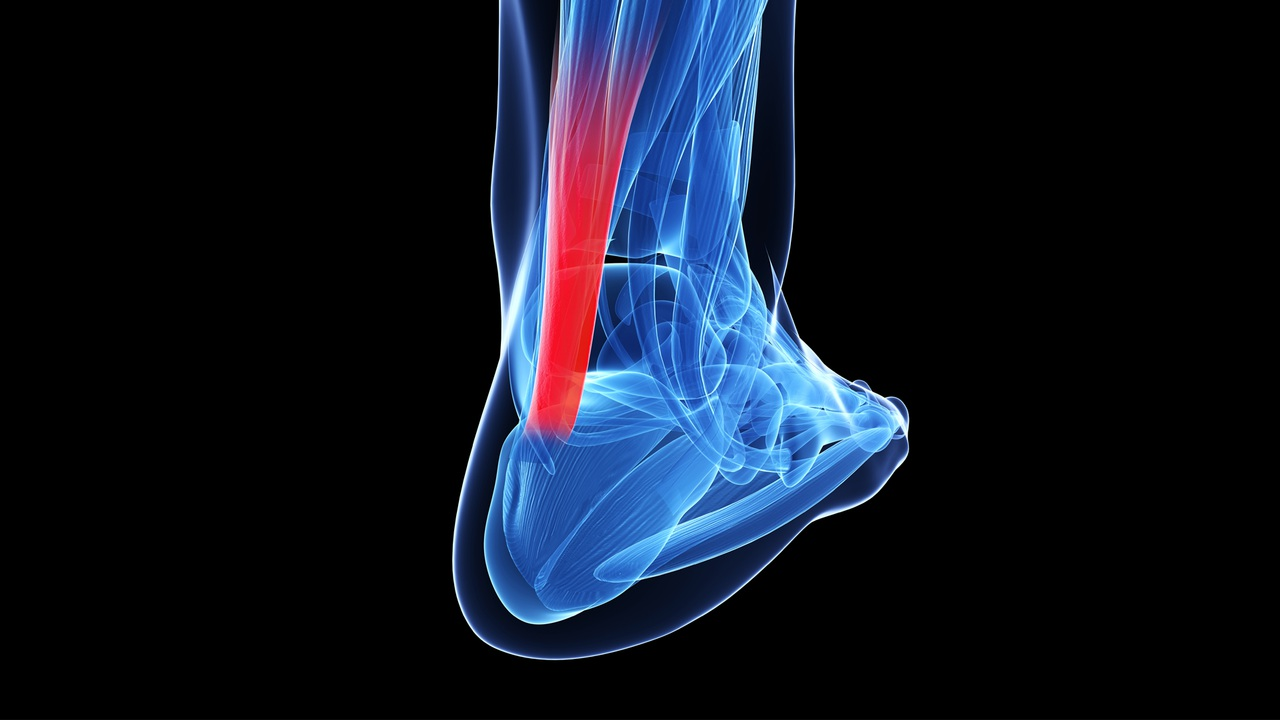We often see patients referred for tendon pain that limits their participation in sports and other activities. Most treatments before seeing us involve stretching, taping, and rest, yet the problem persists. What’s missing from the treatment plan?
Chronic Tendon Pain Treatment
Tendons connect muscle to bone, while ligaments connect bone to bone. Common tendon injuries we see include the Achilles tendon, patellar tendon (Jumper’s Knee), common extensor tendon (Tennis Elbow), and bicep tendon.
Here are some definitions to help if you’ve been diagnosed with a tendon problem:
- Tendinopathy means tendon pathology or a tendon problem and is not specific.
- Tendinitis refers to inflammation, usually occurring in the early stages of the issue.
- Tendinosis is a chronic condition (over a month) involving some degeneration of tendon fibers, where inflammation may not be present, making anti-inflammatories less effective for pain relief.
Tendons can support enormous force, with many in the lower extremities handling multiple times our body weight during sports. For example, the Achilles tendon can handle about 12 times our body weight while running. Tendons are amazing structures that provide a lot of free energy and thrive on load to maintain and improve capacity. So, why do Google and rehabilitation professionals often prescribe stretching as the main intervention? Likely because it was once recommended, it felt proactive, and it was easy to do—a practice rarely questioned until the past 10-20 years.
As you might guess, adding weight and load is typically missing from treatment plans for tendon pain. Our approach to treating tendon pain varies based on pain level, duration of the issue, fitness level, and the individual’s sport(s). In earlier stages, it’s often best to modify activities and gradually add tolerable load. For example, a treatment plan for someone with minimal to moderate Achilles tendon pain lasting more than a few weeks may include addressing ankle range of motion, foot mobility, leg, thigh, and hip/gluteal range of motion, and strength limitations. We might prescribe something as simple as heel raises (calf raises), performed very slowly on a single leg while holding a dumbbell, aiming for 3-4 sets of 3-12 reps with mild pain at the end of the last sets. If tolerated, this can be done 3-5 times a week, adjusting weight as needed. In more irritable cases, starting with both feet and no added weight may be best.
The goal is to restore and increase your tendon’s capacity to meet the demands of your sports and activities. Though tendons can handle much more weight than we can load them with, loading with body weight plus a bit more appears to improve tendon integrity, pain, and function.
Not sure what you need? Let us handle your unique case. Contact us today!
Dr. John De Noyelles, PT, OCS, CSCS


